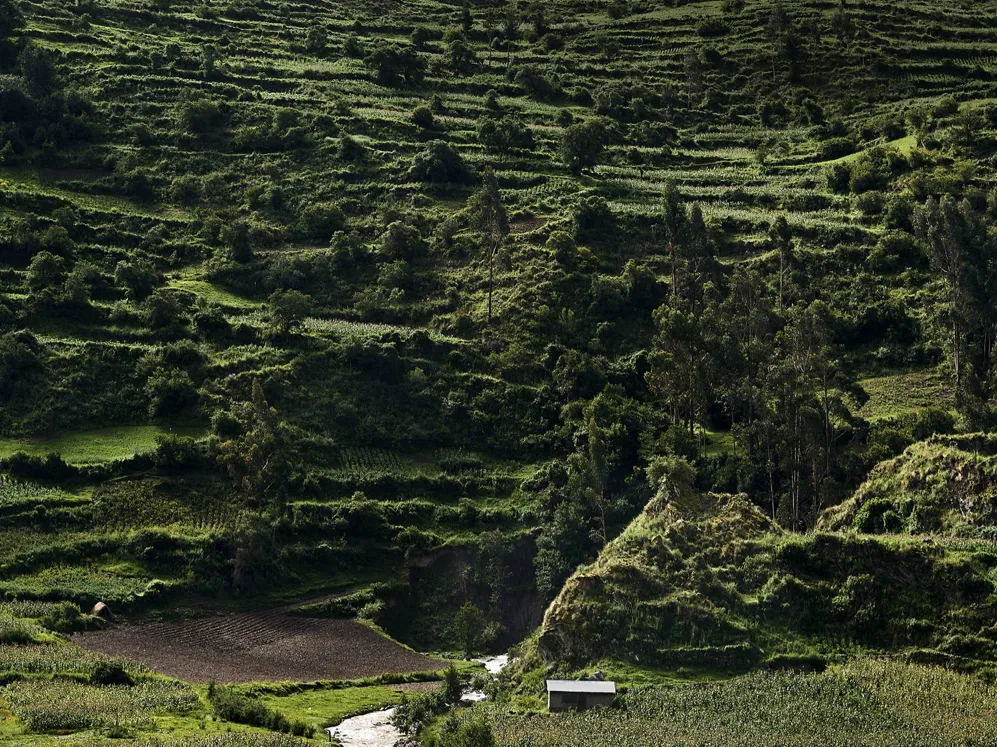
Words Carla Bragagnini Photography Antonio Sorrentino Date 11 August 2021
When Bacilia Cruz Medina leaves her house, she only has two options—walk straight up into the mountains or straight down into the tributary valley below. With steep climbs and oxygen-deprived altitudes, life in the Andes is not for the faint of heart.
In fact, Peru’s vertical range is so vast, it contains 28 of the world’s 32 classified climate zones, all filled with robust ecosystems and unparalleled biodiversity. It was here where, over thousands of years, the pre-Incas and Incas utilized the richness of the territory and their ingenuity to tame unlikely wild plants into what later became world-dominating staple foods. People who live from the land here, like Bacilia, zigzag craggy paths effortlessly, thanks to equal parts grit, ancestral strength, and superhuman lung capacity. Don’t even try to keep up.
Physically I am up two flights of stairs as I write this, sitting in my apartment in Montreal, but through the power of technology, I am also worlds away, at 3,355 meters above sea level, in Bacilia’s tiny village of Marcacocha, in my homeland of Peru. It’s a place that feels so far from my current reality—yet so familiar. To create this Travel Diary remotely from my Canadian apartment, I connected virtually with photographer Antonio Sorrentino, who works and lives in the Sacred Valley. Together, via audio recordings, high-res visuals, and real-time interviews, we joined forces on the ground, traveling through the region to gain further understanding of this incredible vertical archipelago and the relationships its people have with the plants that grow here.
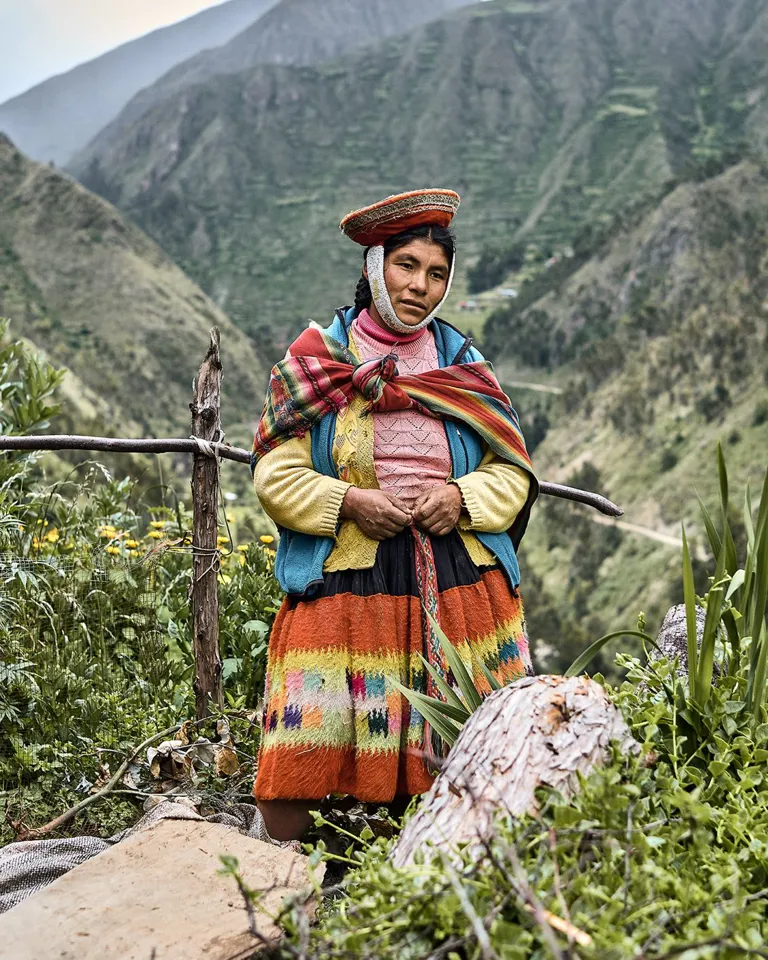
Bacilia Cruz Medina in the hills of Marcacocha, wearing traditional Andean attire.
The first time I visited the Sacred Valley of the Incas, the mystical region between Cusco and Machu Picchu, I was in awe of living tradition coexisting with nature and the remnants of ancient civilizations. Once sprawling noble estate lands, outside of the Inca capital of Cusco, the Sacred Valley is characterized by terraced temples and the remains of royal palaces. The Incas were agricultural experts, building on the work of previous cultures they engulfed. They inherited crops like corn, potatoes, and quinoa from their predecessors, experimented with them and perfected their growth at different altitudes, extensively increasing their varieties—there are over 4,000 types of potato, for example—to create products whose history in the region spans thousands of years. The pre-Incas and Incas also overcame harsh weather conditions and rugged terrain with stone contained terraces (andenes) that maximized land space and daytime heating, planted companion species, and installed irrigation lines that harnessed gushing waters. At its peak, there were one million hectares of arable andenes throughout the Inca Empire, which spanned most of South America. Remarkable, considering they hadn’t even invented the wheel.
The village of Marcacocha boasts some of the highest concentrations of pre-Inca- and Inca-built terraces in the region—a paint-by-numbers landscape of green, yellow, and brown hues—some abandoned but many still active. In Marcacocha, the ruins of Huchuy Aya Orqo (dating back to 800 BC) and a small colonial church with a thatched roof are the only other date stamps. Otherwise, this is a place where time stands absolutely still. Livestock graze freely, tended to by townsfolk dressed from head to toe in traditional and vibrantly woven and embroidered attire—blooming like bright flowers on the land’s fertile soil. Children in fringed ponchos play outside homes perched on hilly slopes, while sheep cuddle up on historic stone walls. Women use the Quechua-named llikllas or mantas on their backs to carry the day’s harvest and forage for flora like the red-petalled kúpuysu, as a way to jazz up their monteras—traditional hats tied with sanq’apas, white-beaded straps. They complete the ensemble with a pollera, a Spanish-influenced folk skirt.
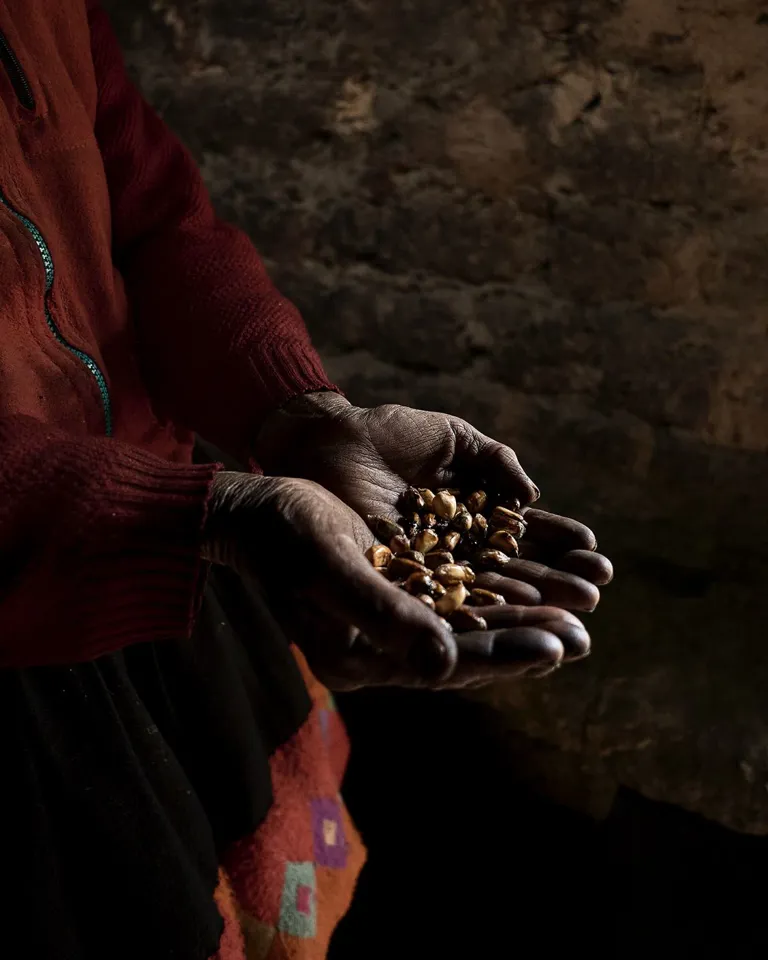
A villager displays a toasted handful of one of the countless corn varieties harvested in the community.

Ancient stone walls coexist alongside Marcacocha's colonial church, which only opens its doors once a year for a festival.
The Spanish colonization of the Incas in the 1530s imposed everything from clothing to religion. The Incas’ weaving art form did fuse with Spanish symbolism, but most indigenous crops and traditions were shunned and replaced with European counterparts, creating stigmatizing narratives. Along with this cultural rejection, it forced civilians to trade agriculture for mining. With no written language, the Incas had relied on oral storytelling. Their Quechua language was used to evangelize, causing the disappearance of dialects. Later, in the 20th century, a violent guerrilla war again ousted Peruvian farmers from their lands and drove them into bigger cities. And modern-day cultural assimilation and ecological changes also pose a threat to many long-standing traditions. It’s hard to pinpoint exactly how or why certain cultural idiosyncrasies disappeared, but
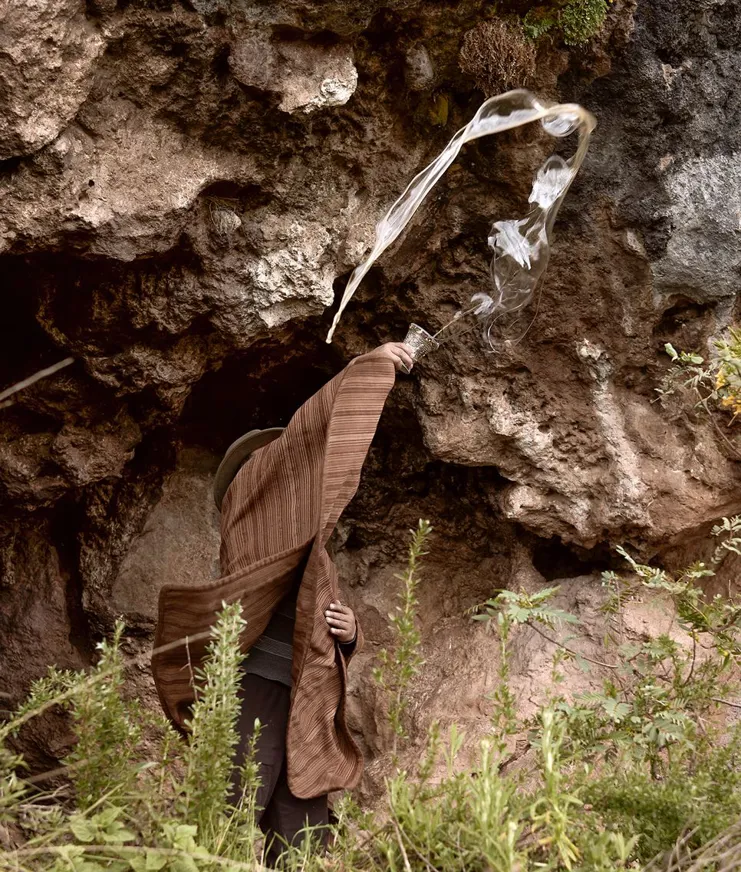
Puma offers wachuma to the cave in a ritual highlighting the Andean principle of ayni or the reciprocity with Mother Earth.
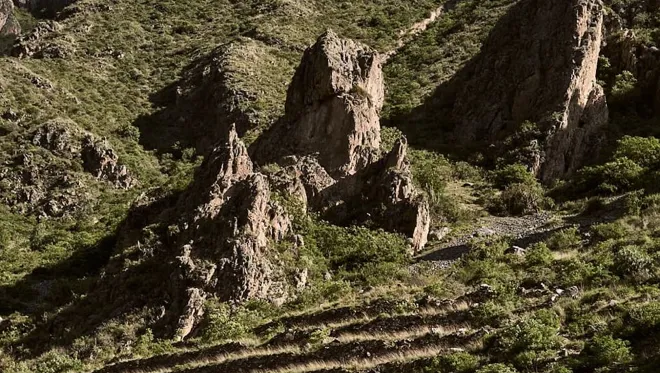
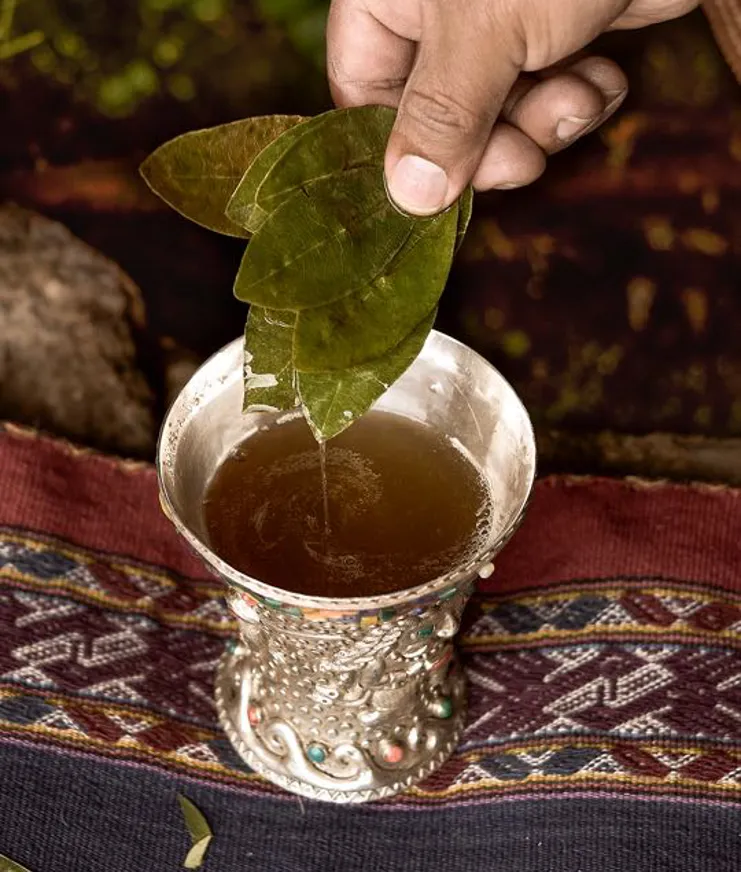
A sacred k’intu offering, consisting of coca leaves dipped in wachuma, can also be made to a natural element, like a cave.
Considering all those challenges, it’s incredible that people in villages like Marcacocha not only continue to live among history but continue to embody it as well. Villagers speak Quechua, as opposed to Spanish, and still grow Inca staples using ancestral methods that remain unchanged—they grow on restored terraces, farm using crop rotations and still use tools like the chakitaqlla foot plow, for example. Despite having lost some diversity of farmed crops and knowledge of foraged plants, they have somehow been able to safeguard other ancient practices for thousands of years.
My journey with Antonio began at 3,762 meters above sea level by enlisting the guidance of Fredy Quispe Singona (Puma), a paqo or medicine man from Chinchero, who in turn has guides of his own. “We believe that she is conscious and that she is intelligent,” he says, of the feminine goddess, Pachamama, revered in Andean culture since pre-Hispanic times. Pachamama, or Mother Earth, is said to sustain life on the planet and preside over harvest and agriculture, lending her abundant fertility.

The altar to Pachamama includes seeds, corn, plants, statuettes, and a llama fetus, laid out on a bed of coca leaves.
“Caves are the womb of Mother Earth,” Puma explains later, as he leads us into the opening of a jagged rock face and sits down to select coca leaves. “We use the coca leaves, as the most powerful medicinal plant. They have roots and flowers that we use for healing our bodies.” Coca leaves were sacred for both pre-Inca and Inca cultures. Regionally, chewing coca leaves gives strength for hard labor and alleviates altitude sickness on long treks. As a ritual observed with others, it is a bonding practice and people gift their most beautiful coca leaves as a sign of gratitude—a k’intu.
Puma holds the leaves tightly, while setting an intention for our global healing and our rebalance with nature. Soulful music fills the cave, courtesy of his quena, an Andean flute, which belonged to his grandfather, who began training him as a paqo when he was struck by lightning at age six. “We believe that plants are spirits and when we play music to them, they connect with us,” he says.

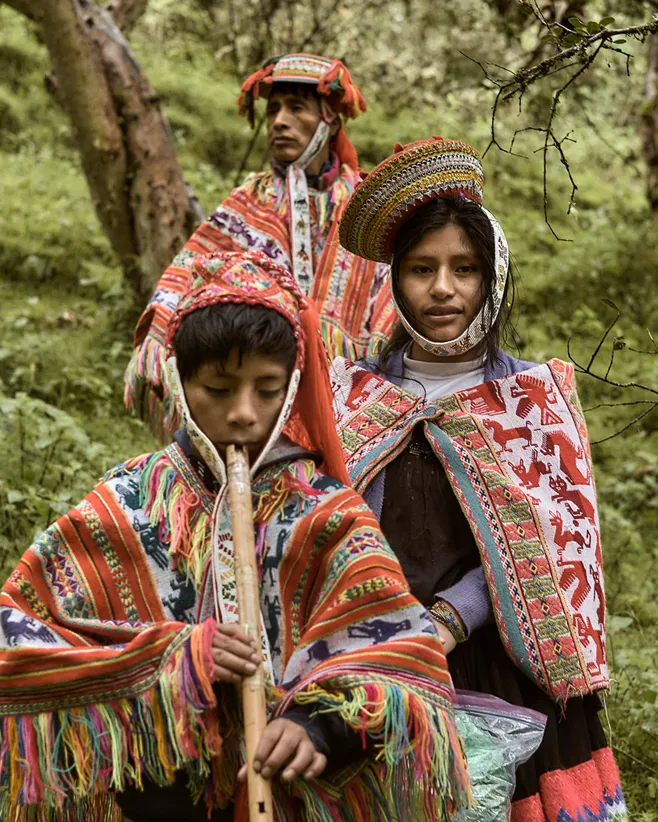
In the next installment, the journey continues from the cave to the mountaintop, where they meet the sky-grazing Andes, their mountain deities, and nature’s own pharmacy.

“Pachamama’s Land’’ is an essay in the 2021 issue of Directions, our annual magazine that looks at movements in travel, art, design, food, and wellness. This year’s issue “Odyssey’’ explores the central theme of Walking by inviting a broad range of voices to take a conscious exploration of this simple act.